WASHINGTON, DC
December 17, 2018
STRANGER: Mike Curtin
LOCATION: Unconventional Diner, 1207 9th Street NW, Washington, DC
THEME: Breakfast with DC Central Kitchen’s CEO
On January 20, 2009, the DC Central Kitchen closed for the first time in 20 years. The organization is a community kitchen that uses wasted food to create meals for those in need, and provides culinary training to jobless adults. Until then, it operated 365 days a years. “Blizzards, hurricanes, floods, you name it, we were open,” says Kitchen CEO Mike Curtin shortly after we meet for a breakfast interview. “Even on 9/11, we delivered food to the Pentagon.”
That all changed the day Barack Obama was sworn in as the first black U.S. president, with the knock-on effect of shuttering the Kitchen. It’s located just outside the regular security boundary for inaugurations, but on that freezing morning in 2009 the Secret Service expanded the perimeter and made it impossible for anyone to enter the building. Thanks, Obama.
Mike is proud of the fact that 1/20/09 was the one and only time the building has closed. For Obama’s second inauguration in 2013 and Donald Trump’s in 2017 the perimeter retracted to its prior scope, and the Kitchen stayed open. Also known as the DCCK, it will mark 30 years in operation next month, and with no presidential ceremony to worry about, the doors will be open. “I know the food will get out,” Mike says with a warm smile.

As the organization’s top figure he’s responsible for every detail large and small. Almost every day he’s at the Kitchen’s 2nd Street NW location overseeing a team of 190 staff, with a volunteer list in the tens of thousands. A lot of work under normal circumstances, heightened with the anniversary. “It’s busy, but it’s pretty exciting,” he says.
Another president, George H. W. Bush, is to thank for the reason the Kitchen turns 30 on January 20. The Kitchen’s founder Robert Egger had previously been a nightclub manager and knew the importance of good PR in getting publicity for DCCK when he launched it in 1989. He wanted a grand gesture for the launch, something that could help people realize that wasted food could be put to good use making meals for shelters and non-profits. He contacted Bush’s team to see if the president would donate surplus food from the January ’89 inauguration. They agreed.
“So we became one of Bush’s original 1,000 points of light,” says Mike, referring to the recently deceased president’s touting of the importance community groups play. The donation from the inauguration garnered worldwide coverage, and sealed the Kitchen’s official birthday.
As January 20, 2019, approaches Mike is careful to note that the organization isn’t “celebrating” the anniversary but rather “marking” it. It’d be ghoulish to be seen feting the fact that people are still hungry and need jobs. But the date is a great opportunity to increase publicity for DCCK and its important work. Some of the plans include having local chefs getting involved in social media campaigns, a breakfast for the city council and mayor and other dignitaries, “all that kind of shit,” Mike says with a laugh, perhaps underselling just how much work he’s putting in to it.
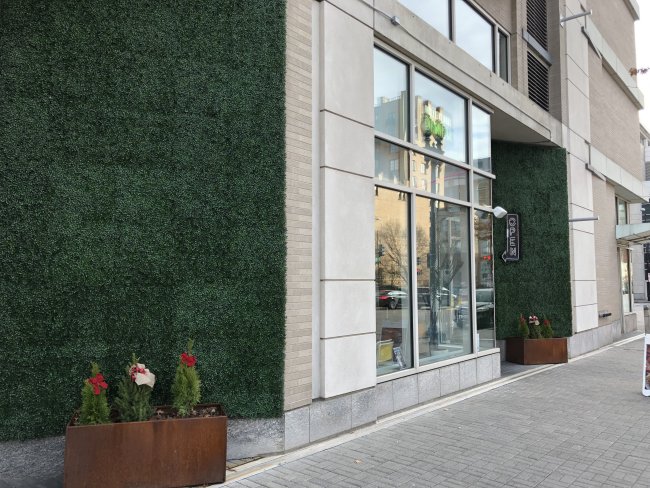
Dressed in a charcoal-colored blazer and blue shirt, with neatly combed dark blonde hair and stylish black glasses framing a cheerful face, Mike carries himself with quiet confidence. His answers to questions are thoughtful, he’s a great conversationalist, and relaxed enough to let the occasional curse word drop into his sentences. It’s like having breakfast with the coolest professor on campus.
I suggested our meeting spot of Unconventional Diner, which opened in December 2017. It’s roomy inside thanks to the high ceilings and tables spaced far apart from each other, though first thing on a weekday morning Mike and I were among just a handful of customers. It’s a table-service restaurant putting a modern spin on conventional diner food, but in the mornings you walk up to a counter and place your order from an abbreviated version of the menu. We do so, then sit in the salmon-colored leather banquette lining one of the walls while we wait for the food to be cooked.
I’m curious how Mike got involved with the Kitchen, which he joined in 2004. He starts at the very beginning with a revelation people who’ve moved to DC don’t often hear: he was born and raised in the city. “We’re not a huge part of the population here.”
Raised in a religious family, he attended the Jesuit Gonzaga College High School before taking up pre-med at the private liberal arts Williams College in Massachusetts. Then he found out the course involved calculus, a subject he hated, so he dropped his initial plan. Instead, he became a religion major, focusing on eastern religions and Japanese history and culture.
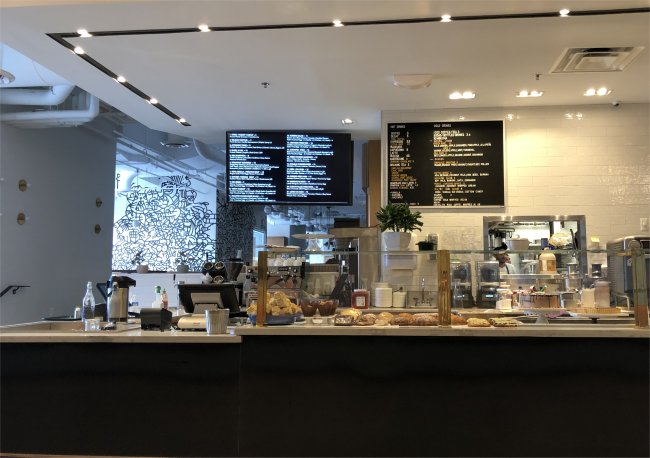
After graduating in 1986, a professor put him in touch with a contact in Japan who took Mike on for an English teaching gig. “I went over ostensibly for a year but ended up staying about three-and-a-half,” he says. Other jobs he held while in the country included a job at an advertising company writing copy and tending bar at a pub in South Osaka.
He speaks highly of his time in Japan but says that most foreigners who stay past five years never return home. “And I was pretty sure I didn’t want to live there my whole life,” Mike explains. “It was a tough decision but the right one, but I didn’t know what I wanted to do next.”
The Japanese economy was booming when Mike returned to the States around the start of the 1990s. “I thought there’s gotta be some way I can make a lot of money on this thing,” he tells me.
Mike did some volunteer work with the Japan-America of Washington DC, which promotes cultural ties between the two countries. He sent his resume out to Society members, and the first response he got was from two Japanese brothers who had bought the iconic Hay-Adams Hotel in the city. They were close to then-President Bill Clinton because they owned a manufacturing plant in his home state of Arkansas, and the hotel was a prime place for them to stay when visiting their pal Bill.
But Mike wasn’t brought on to bolster political connections, instead taking on responsibility for marketing the hotel to Japanese businesses. The position exposed him to all aspects of the hospitality industry, including vital experience in the venue’s kitchen and restaurant.
“I wrote down in my business plan the top 10 reasons why restaurants close and why they wouldn’t happen to me. Every one did.”
“They had big plans to buy more hotels, golf courses, marinas, but about two years into it the Japanese economy burst — and with it my plans for the future with these folks,” he says. Although his job at the Hay-Adams was still secure, Mike realized it was time to move on.
Armed with his knowledge of the hotel’s dining operation, Mike decided to enter the restaurant business and worked for two brothers at a venue that revealed the worst of the industry. “That was a crazy experience; one brother was running his coke habit out of the restaurant checkbook, the other his heroin addiction, and neither knew about the other,” he says, still astonished at the memory. “I was left to explain to people why their paychecks weren’t clearing. So I got out of that.”
Next he worked in a far more professional setting, joining the upscale McCormick & Schmick’s restaurant company to help with opening their first location in Washington. At the same time, he was writing a business plan for his own restaurant, which he opened in 1998. The 146-seat Broad Street Grill, Mike’s eatery in Falls Church, Virginia, was open for about four years. “I wrote down in my business plan the top 10 reasons why restaurants close and why they wouldn’t happen to me,” he says, then pauses and laughs sardonically. “Every one did.”
After shuttering the restaurant, he launched a hospitality and development consulting firm which he ran for two years before joining the DCCK in 2004. He knew of it through his involvement in the local restaurant industry association and had met the founder Robert Egger at events. “Often towards the end of nights he and I would gravitate to the bar and just talk, shooting the shit about his ideas, but I never really considered the Kitchen a job possibility.”
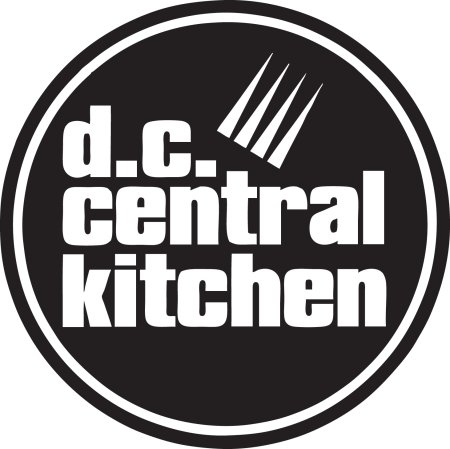
Then the position of chief operating officer opened up at the Kitchen, and Mike applied. As he started to craft his cover letter, he realized the job was the perfect culmination of his life experience, from his religious education to time in Japan and work in the restaurant sector.
“Part of the Jesuits’ training is social justice, creating opportunity and reaching out to others, a sense of duty,” he says, tying it directly to the Kitchen’s work in the community. From Japan, he learned a consensus-building style of leadership and thought that could work at the organization. “And I took great pride in the service at my restaurant, training our staff to be excellent and professional,” which would help with the DCCK culinary training program.
He got the job, and served as COO until 2007 when he was elevated to CEO. “My job description then and now and for as long as I’m there is going to be the same: taking Robert’s vision into the future, and that’s what I feel I’ve always done,” Mike says proudly.
He pauses as our waitress arrives.
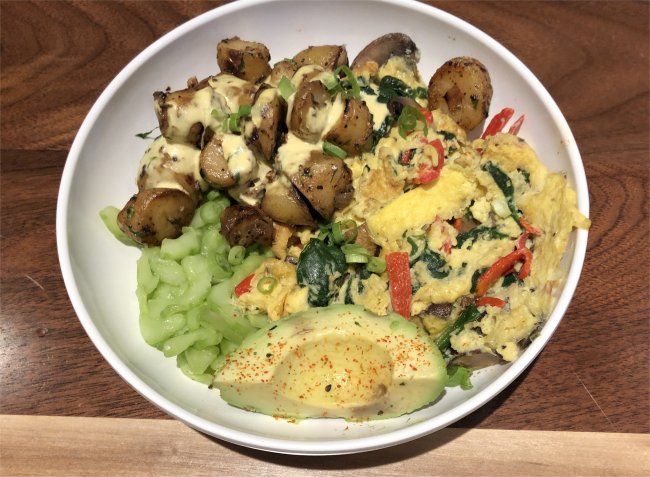
We’ve both ordered the breakfast scramble. The dish starts with a base of fingerling potatoes, avocado and huanciana sauce, and then diners choose additional ingredients. Mike’s scramble included mushrooms and red pepper.
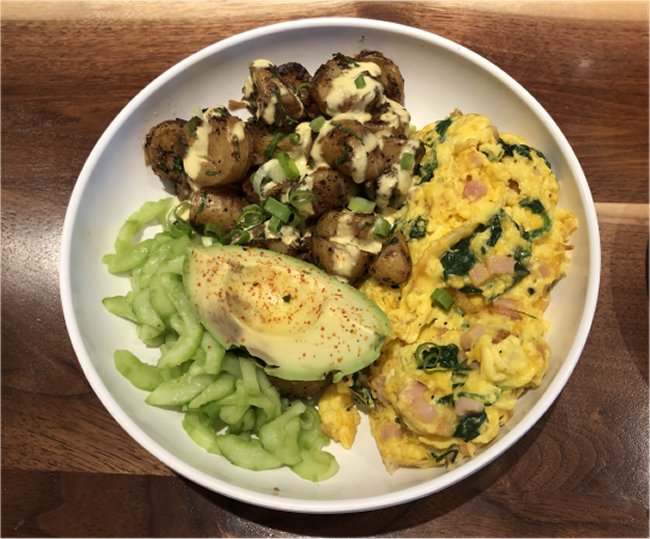
I’m having ham, spinach and white cheddar for my scramble. It’s a lot of food for first thing in the morning. The fresh ingredients blend together well, the sauce binds everything with a mild savory tang. The food’s good enough that I make a mental note to try Unconventional Diner for an evening meal sometime soon.
While we’re eating, Mike tells me he credits turkeys with helping to make a strong first impression when he joined the Kitchen. I arch an eyebrow. Turkeys? He smiles and explains.
In October 2004 the DCCK team was talking about Thanksgiving and panicking because even though they had offers of turkey donations, they had a broken freezer and nowhere to store the meat. “I said, ‘Why don’t we buy another freezer?’ and it was as if I had eight heads,” he recalls with a laugh. “People said, ‘We can’t buy anything, we have to get everything donated.’”
He shakes his head at the memory. “So you’re telling me that we have the chance to get thousands of turkeys — an incredible protein we could use for month — and save tens of thousands of dollars, but the only way we can do that is to get a freezer that works, but we can’t buy it? That makes no sense to me. And I think this was me coming in not from a social service background but from a business, restaurant background, the answer was really simple but people couldn’t get past that.”
So Mike devised a fundraiser for the freezer, a campaign that the DCCK had never tried before. Until then it was what he calls a “by the bootstraps” effort, relying so much on donations that even the office furniture was a mismatched collection of second-hand desks. The campaign worked, pulling in more than enough to pay for the freezer with funds left over. “Not only did it pay for this brand spanking new freezer, but also the five-year warranty and the installation.”
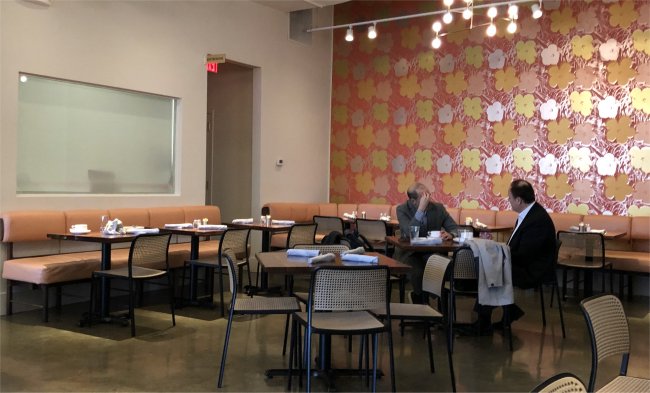
Another problem arose after the freezer was installed: no turkeys. Because the Kitchen had lacked the freezer space until then, it was unable to accept donations. Now they had a place to store the birds but none on hand. Mike figured out a solution. “I try to stay away from the shelves-are-bare stories, but we had to do one of them this time,” he says. A local reporter came to the Kitchen and the pictures of the barren freezer shelves did the trick. The next day people were lined around the block with turkeys to donate. “It was one of those holiday miracle good feeling things.”
In addition to solving the Thanksgiving problem, Mike also counts the fundraiser and turkey drive as “a mental and emotional turning point” for the organization. “It felt that we no longer had to carry the weight of the world on our shoulders and do everything with bubblegum and shoelaces. We can use that which has been wasted or marginalized but we have to be smarter about it, like if we’re not getting really good turkeys because we don’t to buy a freezer, then that’s not being smart.”
Mike’s applied his get-smarter approach throughout the years to the Kitchen’s full range of programs, such as its Campus Kitchens Project promoting the use of wasted food at universities across the country. DCCK also offers culinary job training for unemployed adults so they can get careers in the industry and “leave hunger behind” according to the organizations’ website.
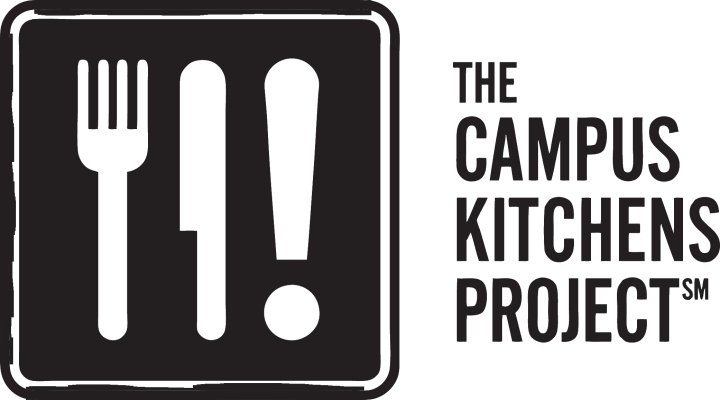
DCCK also offers community meals for homeless shelters and nonprofits using wasted food, serves farm-to-school food to low-income schools (Mike explains that they buy fresh the produce for those meals), delivers fresh produce to corner stores in the city’s “food deserts” (places without easy access to nutritious food) and promotes the community kitchen idea at universities. More than 16,000 volunteers help throughout the year, and there’s the core team of 190 staff members. Employees include recovering addicts or felons struggling to find work elsewhere.
“People often say to me, and these are what you’d consider woke people talking, they say isn’t it hard working with those people?” Mike says, shaking his head. “It’s hard to get people out that mindset. And my response is, well actually I’ve never had more dependable, reliable, dedicated staff and that’s mostly because they understand the value of these job. These are people who could be 40, 50 years old and never really had a job. And for them it can be a life or death situation.”
The job training program has been an integral part of the Kitchen since its founding, which Mike says is a recognition of the fact that feeding people alone won’t end hunger no matter how many meals they serve. “We need to get people out the hunger line, and how do you do that? Creating jobs, or creating opportunities for people to get jobs. One of the things I have been part of is elevating that program to a higher level, and that’s been a constant journey.”
So where does the Kitchen get its wasted food?
I tell Mike that when I think of wasted food I think of scraps leftover after a meal. “No,” he tells me, gesturing at his half-eaten scramble, “It would never be this.”
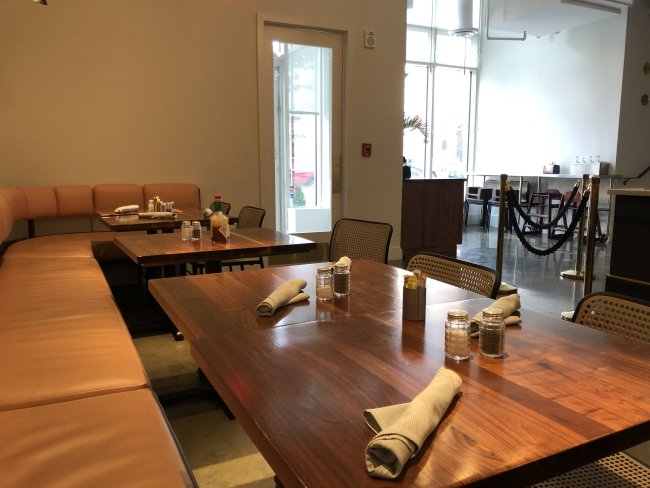
When DCCK started, the bulk of its donations were literally wasted, untouched food; pans of lasagna or sides of meat from restaurants that was cooked but not served. Present day they get almost no food from restaurants, which Mike says is a combination of two things. First, restaurants have changed the way they operate given tight profit margins and so they have minimal waste. “We used to say to chefs just give us what’s leftover and at the end of the year we’d give them a receipt, ‘Thanks for your 50,000 pounds of leftover food.’ Well, holy shit, that’s a raise, or an extra sous chef. So cooking has changed now and if you’re wasting food you’re going out of business.”
Second, the huge demand for the Kitchen required a change in how they operate. “When Robert started there were a couple hundred meals a day, you could get some chicken breast and pasta and baked potatoes and cobble together a meal,” Mike says. “But now we’re doing 5,000 of these a day and it doesn’t work that way. We need to plan and create things out of whole raw product.”
The Kitchen receives a lot of donations from the Capital Area Food Bank, an organization I featured on Dining With Strangers back in December 2011 when I interviewed its communications manager. Other suppliers include meat producer Smithfield, a sponsor that donated 30,000 pounds of ribs this summer, and Tyson Foods. DCCK also works with vendors in the District and farms, buying some raw product. “We buy a lot of their product that’s aesthetically or geometrically challenged,” Mike says, adding that this allows the Kitchen to make major investments in rural economies.
Having such an impressive stock of food means the Kitchen can better plan its weekly menus, whether it’s the food they serve or the meals they sell through their social enterprises. “A big piece of what I’ve been focusing on is growing that,” Mike says. “When I started we did maybe half a million dollars in catering. Last year we did $9 million and most of that was school food.”
The school meals are made from scratch and not from wasted food, and the Kitchen competes for contracts to serve meals. Federal rules require submission of school menus months in advance, which allows Mike and his team time to plan with farms on precisely what they’ll need. “Buying in bulk is useful when we’re making about six or seven thousand meals a day.”
“We want to talk about the economics, about jobs.”
The full gamut of Kitchen services is impressive, but I wonder whether the general public only really takes interest in its work during the holidays when newscasts play up stories of hungry homeless people. “That’s something we have to be very careful about,” Mike replies. “Quite frankly you could be sort of smug about that and say people are also hungry in July or February. If the holidays inspire people to be more generous then we need to take advantage of that, but it is important that people do understand this is a year-round mission. And we avoid using pity as a marketing tool because it’s not sustainable. If you have to have a victim to perpetuate generosity and charity you’re always going to have that class of people tethered to poverty for the sake of the system.”
Instead, take a look at the Kitchen’s website and you’ll see photos of smiling staff, culinary students looking happy doing hands-on work, and positive stories about the organization. “And that’s very purposeful,” Mike says. “We want to talk about the economics, about jobs.”
The Kitchen features success stories about its team, for example a felon that has taken up culinary lessons and secured a job as a result. And it can be a fine line telling those tales, to avoid any hijacking of those narratives. “If we don’t talk about someone’s criminal backstory then we’re just a cooking school and who gives a shit? But we have to be careful and respectful of the individual. If our guy hadn’t been in prison for 20 years who the fuck would care? He’s just a dude making sandwiches. But from a jobs standpoint his story has legs,” Mike says. “And that’s why we can get people excited in August and February and May because it’s an exciting story.”
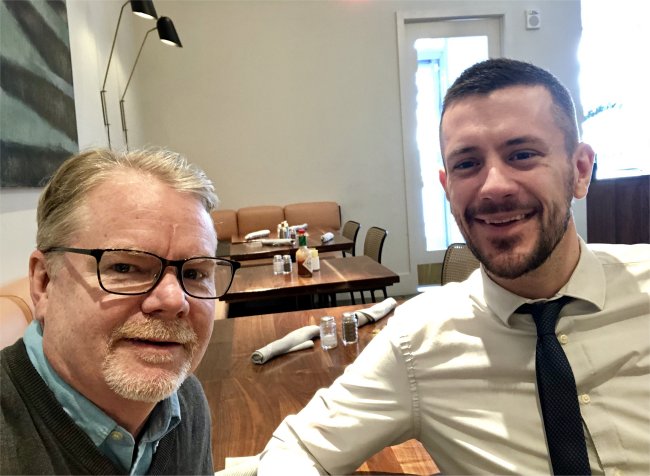
We’re done eating and our allotted hour is almost up, so as I sip at a strong black coffee I ask Mike what’s left to tell of the Kitchen’s story, and what he wants to try next.
The Kitchen will expand its training program, and plans to open a cafe at Ward 8’s THEARC community center non-profit hub. And Mike will keep pushing to grow the social enterprise programs like selling school meals, things that generate revenue and create jobs. For example, while he concedes that DCCK won’t ever be the sole food service provider for all the area’s schools, he’d like to be the provider of specific items such as tomato sauce. “So we could source the tomatoes from our farms, produce that sauce and then sell it to the other school vendors.”
“Another thing I’d really like to do is become more involved with senior meals,” he says.
I wonder how such a busy life leaves any free time, and Mike laughs. “It is busy but it’s pretty exciting,” he says, and praises the support of his wife and three children, telling me being a dad is just as much a full-time job as running DCCK. “Somehow I fill every damn day.”
As we get ready to leave, he reminds me of his belief that the DC Central Kitchen is the perfect blend of his diverse background, and something about which he’s still passionate. “It just makes sense, it’s all these different pieces coming together. It’s been a beautiful ride.”
naxcs3
fblvx2